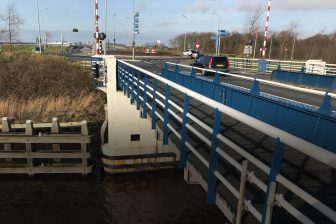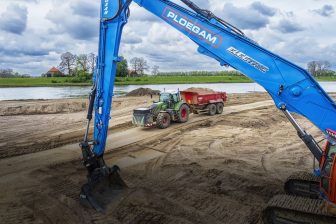Build-for-All Reference Manual: accessibility criteria
Build-for-All’: including accessibility criteria in public procurement
Introduction
The Build-for-All Reference Manual raises awareness among decision makers and public servants of the importance of accessibility of the built environment for all citizens, particularly disabled and elderly people. The Manual provides useful step-by-step practical guidance for public authorities on how to integrate accessibility criteria in calls for tender for the design and construction of for example public buildings, public transport facilities, streets and pavements.
Description
The Build-for-All Reference Manual encourages the inclusion of accessibility criteria in calls for tender for the design and construction of public works in all European Union (EU) member states. The Reference Manual consists of the Build-for-All Handbook and the Build-for-All Toolkit, both of which are described below.
The Build-for-All Handbook
The handbook is divided in two sections. The first section gives background information on the importance of accessibility in an increasingly diverse and ageing Europe. Particular attention is paid to ‘Design for All’, an approach that challenges decision makers and public servants to ensure accessibility to the built environment, transport facilities and public spaces. ‘Design for All’ aims to enable all people to have equal opportunities to participate in every aspect of society.
The second section focuses on the scope that the European Union (EU) directives on public procurement procedures offer for integrating accessibility criteria in calls for tender for public works. In general, a procurement procedure consists of the following four phases:
- 1. identification of the needs, preparation of the call for tenders;
- 2. selection of the qualified contractors;
- 3. evaluation of the tenders, award of the contract;
- 4. implementation and performance of the contract.
For each of these phases, the handbook describes to what extent public authorities can include accessibility criteria following the provisions of the EU directives. To conclude, the handbook lists seven main points that should be kept in mind when preparing an accessibility-friendly call for tenders.
The Build-for-All Toolkit
The toolkit puts forth a practical approach for contracting authorities to include certain procedures and technical requirements in procurement, to ensure that accessibility criteria are met in the design and construction of public works. Following the four phases set out in the Handbook, the toolkit provides step-by-step guidance on how ‘Design for All’ criteria can be taken into account when calling for tenders. To encourage the implementation of ‘Design for All’, seventeen examples of good procedural practice in the procurement of public works are presented. These range from building a fully accessible primary school to summer courses for European technology students on ´Architecture for All´.
Background information
In 2004, the EU introduced revised directives on public procurement that must be respected by contracting authorities when tendering for public works. These directives offer scope to contracting authorities to promote accessibility for all, including disabled and elderly people, to the built environment. The Build-for-All Reference Manual will help public authorities to seize the opportunity provided by the revised directives to bring about concrete changes in accessibility.
The Build-for-All Reference Manual was compiled under the Build-for-All project which ran from December 2004 to December 2006. The partners of the Build-for-All project were accessibility professionals and user groups, active at both European and national level:
- Info-Handicap (Project coordinator);
- Architects’ Council of Europe (ACE);
- AGE;
- Council of European Municipalities and Regions (CEMR) / Conseil des Communes et Régions d’Europe (CCRE);
- European Committee for Standardisation (CEN);
- European Disability Forum (EDF);
- European Institute for Design and Disability (EIDD);
- European Lift Association (ELA);
- European Concept for Accessibility Network (EuCAN);
- Eurocities;
- European Construction Industry Federation (FIEC);
- CO.IN – Cooperative Integrate (Italy);
- NeumannConsult (Germany);
- ProAsolutions S.L. (Spain);
- City of Gdynia (Poland).
EU involvement
The Build-for-All project was partly funded by the European Union.
Conclusions
By following the principles and practical guidance presented in the Build-for-All Reference Manual, public authorities can provide a better functioning, more comfortable and safer living and working environment for all people in society.
The Build-for-All Reference Manual also makes a number of recommendations:
- In addition to the non-binding EU directives on public procurement, all EU member states should adopt national legislation which lays down a systematic and structured implementation of ‘Design for All’ principles in public procurement;
- When designing public works, consult external experts on accessibility. They will help to identify and solve any accessibility issues that may arise in an early stage of the project;
- Public authorities should give preference to using the most economically advantageous tender procedure when evaluating tenders for public works. This is because accessibility criteria can only be part of the contract award criteria when using the most economically advantageous tender procedure, as opposed to the lowest price procedure. High weighting can then be given to tenders who adhere to ‘Design for All’ principles.
More Information
Build-for-All project website
Info-Handicap (in French)
The Build-for-All Reference Manual




